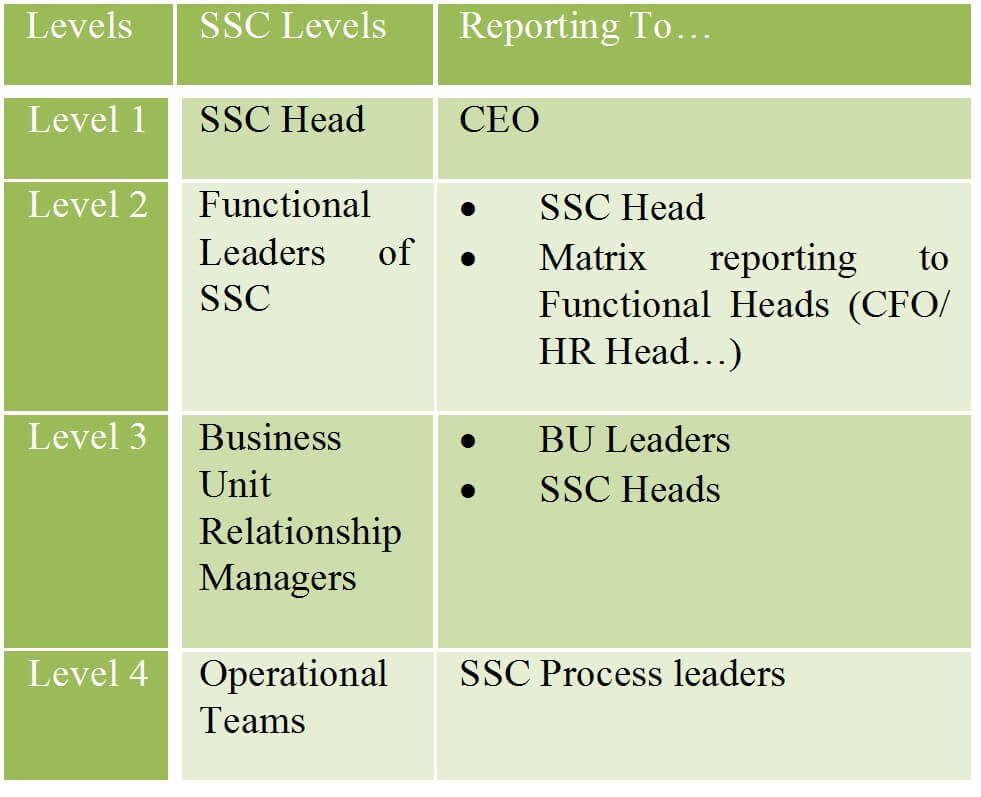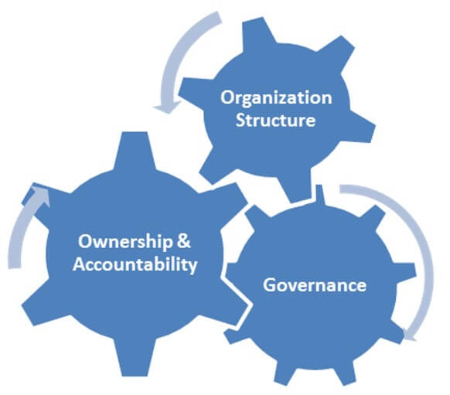
Would you like to start a conversation with other industry leaders to brainstorm a challenge or to just know more on a particular topic?
Engage in online discussions with your Peers
Start NowOver the last decade, Shared Services as a concept has gained considerable momentum in India for Indian Organizations - some are very successful, a few gaining acceptance and many falling flat.
One of the key success factors to consider while setting up a shared services centre would be its right placement within the overall organisation structure.
Creating accountability and ownership for deliverables of shared services is critical. How do we do that?
- Organisation Structure
- Governance framework
Organisation Structure
One of the key success factors to consider while setting up a shared services center would be its right placement within the overall organisation structure. Should shared services be an independent unit directly reporting into CFO or CEO of the organisation? Should each function within shared services have reporting lines to functional heads? OR is the reporting to the CIO better since this role has a cross functional accountability for all businesses and horizontal functions? What happens to the various business units that transferred work to the shared services?

Can business finance wash off responsibility for a wrong payment made to their vendors by a shared service center? OR can the taxation head claim ignorance of wrong TDS % being applied by a shared service center? The reporting structure becomes even more critical for success when the Shared Services Center renders services relating to several functions – F&A, HR, Procurement, IT etc.
While there might not be a one fit solution for all, in my experience what I have seen work very successfully is an “Integrated Matrix” reporting structure.
Level 1 - To begin with, assuming that the shared services center renders services relating to several functions say Finance, HR, Procurement and IT – the leader of the Shared Services should definitely report directly into the CEO of the company. This would clearly signal the importance of the shared services within the overall organisation framework; the SS head would be part of strategic thinking & discussions and will be aware about the short term/ long term goals of the organisation.
Level 2 - The second layer of the SS Leadership team i.e. the functional heads like the Finance head/ HR head or procurement head within the SS should have direct reporting to the SS Head with functional reporting to the CFO/ HR Head/ Procurement head of the organisation. This leadership team should represent the shared services and also be part of the functional team. They should work closely with functional leaders/ managers to define strategy for the SS, set up processes and also jointly review and monitor performance of the shared services.

Level 3 -Depending on the size and scale of the SS Operations, there is a genuine need for Business Unit relationship managers within the shared services center. These folks should have a direct line of reporting to the business with a dotted line to the shared services. They would be the last resort as an escalation point for business units for matters not resolved directly by the operational teams. They should be part of strategy and the overall shared services governance framework.
A right governance framework establishes joint accountability
between the business and the shared services.
Level 4 -All operational teams within SS should function with direct internal reporting only with no or limited external interface to ensure process discipline and process success.
Governance Framework
While the reporting relationship is important, critical to success is also a robust governance structure to reinforce the ownership/ accountability.

A right governance framework establishes joint accountability between the business and the shared services. The governance structure should involve participation from all the 4 levels of the SS team along with the functional leadership teams with sponsorship of CFO/ CEO.
- Information update: Ensure SS performance, regular status update on day to day operations is passed on to the right people
- Dashboards/ Metrics: Agree on a frequency and track SS performance
- Monthly customer meetings: Discuss issues, next steps
Besides the above it is critical that decisions on non-standard, non-routine matters should always be taken after due consultation with functional experts and relevant stakeholders. A strong and robust governance process supports performance by clearly defining desired outputs; outlining and managing the means of tracking and assessing this output; and providing solutions to dealing with any deviations from what is expected. In view of the scale and size of Indian organizations, the Shared Services operations in India are required to be multifunctional and the need to create a robust ownership/ accountability and governance assumes very high importance for the Shared Service Centers to be successful.
ABOUT THE AUTHOR

B Jayaraman is a Finance Professional with 22 years of rich all rounded experience, working with multinational corporations like Coca-Cola, Pepsi and HSBC both in India and abroad, handling Plant Finance, Commercial functions, Audits and Controllership in various positions in Finance and General Management. Before joining USP, Jayaraman was Vice President –Finance and Head of Shared Services and Business Process Excellence at Dr Reddy’s Laboratories Ltd where he successfully championed the outsourcing of Shared Service Operations to a Business Process Outsourcing firm. Currently in his role as Vice President-Operations at United States Pharmacopeia (I) Pvt Ltd in Hyderabad since June 2013, he is responsible for overseeing functioning of several departments at USP India including Finance and Accounting, Information Technology, Administration and Facility Management, Procurement & Logistics, Quality Assurance and Legal & Compliance. Jayaraman is a Cost Accountant by profession (ICWA) and holds a bachelor’s degree in Commerce from Marathwada University., India.




